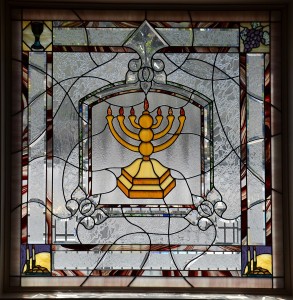
The article is based on the podcast, Revelation 3v1-6 – Jesus, to the church in Sardis.
Context
Welcome to this Light and Life Bible Ministries message. Our aim is to help you have a clear understanding of the Bible. This message focuses on what Jesus said to the church in Sardis. Let’s start by reading Revelation Chapter 3, verses 1 to 6. I’m reading in the English Standard Version.
1“And to the angel of the church in Sardis write: ‘The words of him who has the seven spirits of God and the seven stars.
“‘I know your works. You have the reputation of being alive, but you are dead. 2Wake up, and strengthen what remains and is about to die, for I have not found your works complete in the sight of my God. 3Remember, then, what you received and heard. Keep it, and repent. If you will not wake up, I will come like a thief, and you will not know at what hour I will come against you. 4Yet you have still a few names in Sardis, people who have not soiled their garments, and they will walk with me in white, for they are worthy. 5The one who conquers will be clothed thus in white garments, and I will never blot his name out of the book of life. I will confess his name before my Father and before his angels. 6He who has an ear, let him hear what the Spirit says to the churches.’
Jesus instructs John to write to “the angel of the church in Sardis.” In His introduction, He references Himself as “him who has the seven spirits of God and the seven stars.” In so doing, Jesus highlights His relationship to “the seven spirits,” which, we previously saw, is a depiction of the Holy Spirit, and to “the seven stars,” who, Jesus previously explained, are “the angels of the churches.”
Jesus Exposes and Threatens the Church
Jesus cuts to the chase, saying to them, “You have the reputation of being alive, but you are dead.” This is perhaps why He references the Holy Spirit. For it is only by the Spirit that they will find true life in God. After all, John, in his gospel, recorded Jesus saying, “It is the Spirit who gives life; the flesh is no help at all” (John 6:63).
Jesus then says, “Wake up, and strengthen what remains and is about to die, for I have not found your works complete in the sight of my God.” He warns them to wake from their spiritual sleep and says their works are unfinished. Jesus reminds them of what they knew to do, saying, “Remember, then, what you received and heard. Keep it, and repent.” He warns, “If you will not wake up, I will come like a thief, and you will not know at what hour I will come against you.” This is a threat of unexpected judgment upon the church.
Jesus Praises the Faithful
Jesus acknowledges the faithful among them, saying, “Yet you have still a few names in Sardis, people who have not soiled their garments . . . they will walk with me in white, for they are worthy.” The implication is that those who are unfaithful have soiled garments and are not worthy of walking with Him. This should be seen as disciplinary rather than permanent for this analogy precedes the eternal promise, of wearing white garments, given to the entire church.
Jesus Reminds of Promises in Him
Jesus gives these promises for those who conquer, in other words, all Christians, saying, “The one who conquers will be clothed thus in white garments, and I will never blot his name out of the book of life. I will confess his name before my Father and before his angels.”
Finally, Jesus says, “He who has an ear, let him hear what the Spirit says to the churches,” making all that He said to this church applicable to the seven churches and, by implication, His entire Church throughout history.
Rob Morley
Find the podcast here.









